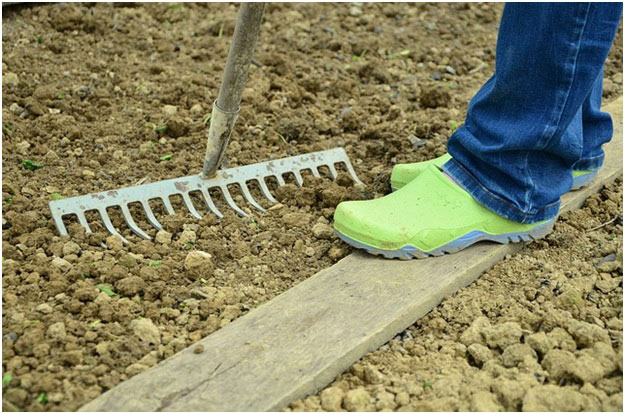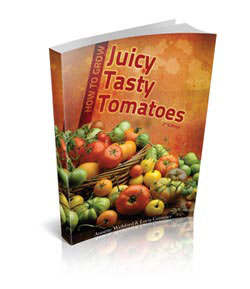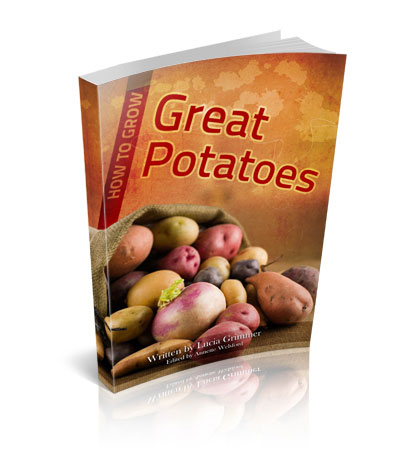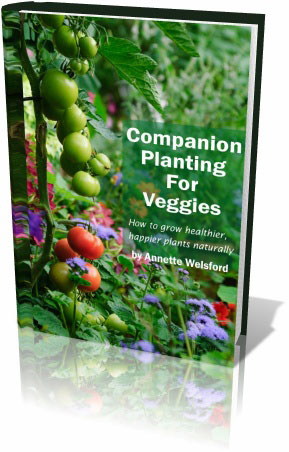How to Improve Clay Soil In Your Yard And Garden
 Do you have a garden with clay soil? If you do, you are probably having a difficult time with your vegetable and flower garden. There are, however, ways on how to improve clay soil to make it ideal for your plants to grow in.
Do you have a garden with clay soil? If you do, you are probably having a difficult time with your vegetable and flower garden. There are, however, ways on how to improve clay soil to make it ideal for your plants to grow in.
Clay soil is characterized as consisting of 50% heavy clay or clay particles. It is easy to determine clay soil. Clay soil sticks to your garden tools or your shoes like glue does, cracks when the weather is dry and becomes a clod that is difficult to separate.
Although clay soil is okay for shrubs and trees; vegetables, perennials and annuals are not strong enough to thrive in clay soil. Bulbs will never survive winter in clay soil, too. Here are more of the downsides of having clay soil:
- Often alkaline
- Prone to heaving in winter
- Easily gets compacted making root growth difficult
- Warms slowly in spring
- Drains slowly
The good news though is there are things you can do to improve clay soil to make it suitable for most of your vegetables and flowers. Here are some remedies on how to improve clay soil.
1. Add Organic Matter
Add organic matter such as compost, rotted manure, shredded leaves, and grass clippings (chemical-free).
Organic matter will make the heavy clay soil lighter. Organic matter will also improve the soil’s drainage and provide nutrients for microorganisms that will improve the soil. It is best to mix organic matter between 6 to 12 inches deep into the soil.
A shovel is the best tool to mix organic matter with clay soil because it does not pulverize the particles of the soil when it turns the earth. If digging to mix organic matter with clay soil will be too strenuous, you can use an electric tiller.
After adding organic matter to the clay soil, you will have a raised garden. The soil will however settle and get back to its original height over the course of the planting season. The structure of the soil though will continue to improve because the organic matter you added will break down because of the microorganisms in the soil.
Keep on adding organic matter at least once a year to allow the structure of the soil to keep on improving and to deal with any possible settling.
2. Sow a Cover Crop
A cover crop is similar to a live mulch. Choose a cover crop that is ideal for your region. If you are in the warm regions, oats and crimson clover are the best. Winter rye and winter wheat are popular choices for cooler region.
If you are working with a winter cover crop, plant them after you have harvested the last crops. When you start planting the following spring, simply add organic matter and till your plants into the improved clay soil.
3. Do Some Mulching over the Winter
Mulching with organic matter over the winter and the growing season to keep rain from packing down on the bare soil. Adding a layer or two of straw will lessen corrosion and protect soil from being compacted. Mulching can also prevent the growth of weeds.
4. Create Raised Beds
Raised beds improve drainage. This is because clay soil retains water. When beds are raised, water will tend to run off. You can build raised beds from stones, bricks or wood. Make sure the beds are in the right sizes so you reach the middle part without having to step on the bed. Not stepping on the bed can reduce compaction.
Be aware that before improving clay soil, make sure to avoid compaction. When clay soil gets compacted, the more difficult it is work with. It is best not to till too much and also not to walk on it before you have improved clay soil.
An improved clay soil will make it ideal for planting flowers and vegetables. Best ph meter for garden soil testing will help you determine the exact soil conditions to keep your plants healthy.
Do you live in an area where clay soil is common? Have you been successful in improving your clay soil? Share with us some of your thoughts in the comments section.
If you find this article helpful, please share it with your friends who need to deal with clay soil.












